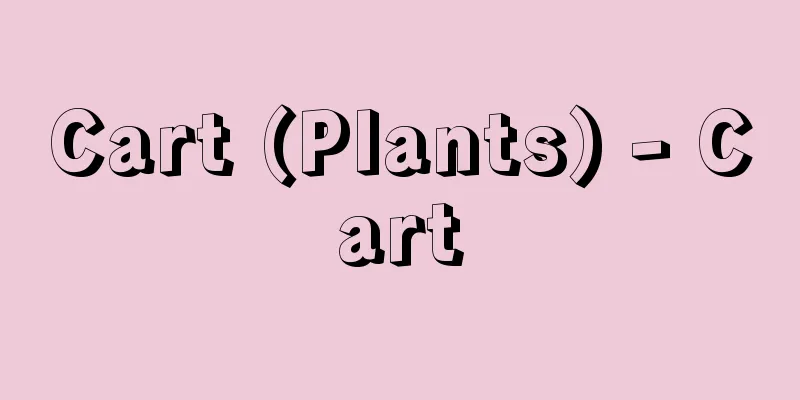Impulse - Trieb (English spelling) German

|
A term used in psychoanalysis. It refers to the mental representation of an excitement that originates from within the body and reaches the mind. It is also called a drive. Impulse is a concept similar to need, desire, and drive, and refers to motivation in general psychology, but in psychoanalysis the concept of impulse is used specifically. In Japanese literature it is sometimes called instinct, but impulse does not mean instinct as a concept of ability, nor is it fixed like biological instinct. [Daisaku Tonobayashi and Masamichi Kawabata] Freud's theory of drivesFreud's theory of drives can be roughly divided into three periods. In the early period, it was a theory of drives based on the conflict between the ego drive and the sexual drive, in the middle period it became a theory of libido, and in the later period a theory of drives was constructed based on the conflict between the death drive (Thanatos) and the life drive (Eros). What remains consistent in these theories of drives is the sexual drive, and it is only with the development of psychoanalysis that it appears as if a major change has occurred on the surface. As a methodological approach, it is characterized by an attempt to clarify the structure of drives through opposing concepts. [Daisaku Tonobayashi and Masamichi Kawabata] initialIn the early stages, two drives are taken up: the ego drive for self-preservation and the sexual drive, which correspond to appetite and sexual desire in the common-sense sense. However, this is not an attempt to consider the two drives in parallel or as a classification; the idea of the ego drive for self-preservation is nothing more than a means to clarify the emergence of the sexual drive. For example, when an infant is breastfed by its mother, the infant's attempt to reproduce the satisfaction it experiences at that time by sucking its thumb is considered to be the germ of the sexual drive. In this way, the emergence of the sexual drive can be seen in the compulsive repetition of thumb sucking, which has nothing to do with self-preservation. [Daisaku Tonobayashi and Masamichi Kawabata] Mid-termThis autoerotic sexual drive is satisfied by stimulating a part of the body, a part of the body called an erogenous zone, but when the whole body becomes the object of the sexual drive, narcissism arises. Here, the sexual drive is called libido in a holistic way, and libido is considered to be directed either at oneself or at others. This development of the theory of drives was born out of an intention to expand psychoanalysis from the treatment of hysteria and obsessive-compulsive neurosis to psychopathology (narcissistic neurosis). However, if one were to expand psychoanalysis to the psychopathology that Freud called narcissistic neurosis, then what is called libido would have to include not only the sexual drive but also the ego drive for self-preservation, because the ego is also a sexual object. [Daisaku Tonobayashi and Masamichi Kawabata] Late PeriodTherefore, in later periods, the ego drive and the sexual drive are collectively called the life drive, and the death drive is taken up as a concept that opposes it. This death drive is a thorough implementation of the homeostasis principle, which is Freud's basic idea. According to the homeostasis principle, the mind is said to try to keep tension at the lowest possible level, or at a certain level, but the latter is a transformation of the homeostasis principle into the pleasure principle under the influence of the life drive, and the former is the original form of the homeostasis principle. In this sense, the homeostasis principle, that is, a return to zero tension, leads to death, the state before the birth of life. In the past, many analysts had many doubts about the death drive, but it was reevaluated by Klein and Lacan, who recognized the clinical significance of the death drive through analytic treatment of children. A major feature of Freud's drive theory is that it deals with the structure of drives. [Daisaku Tonobayashi and Masamichi Kawabata] "Instinct and its Fate" and "Beyond the Pleasure Principle" by Freud, translated by Okonogi Keigo (included in "Freud's Collected Works 6", 1970, Jinbun Shoin)" ▽ "Clinical Klein: From the Origins of Kleinianism to Contemporary Development" by Robert D. Hinshelwood, translated by Fukumoto Osamu, Kibe Norio, and Hirai Shozo (1999, Seishin Shobo)" ▽ "Lacan, Return to Freud: An Introduction to Lacan" by Philippe Julien, translated by Mukai Masaaki (2002, Seishin Shobo)" [Reference] |Source: Shogakukan Encyclopedia Nipponica About Encyclopedia Nipponica Information | Legend |
|
精神分析の用語。身体内部に由来し、精神のなかに到達する興奮の心的表象のことをいう。欲動ともいう。衝動は要求、欲望、動因などと類似の概念で、一般心理学でいう動機のことであるが、精神分析ではとくに衝動という概念が使われる。日本の文献では本能とよばれることもあるが、衝動は能力概念としての本能の意味ではないし、生物的本能のように固定的なものでもない。 [外林大作・川幡政道] フロイトの衝動論フロイトの衝動論は大別して3期に分けて考えることができる。初期は自我衝動と性衝動の対立による衝動論であり、中期になるとリビドー論となり、後期になると死の衝動(タナトスThanatos)と生の衝動(エロスEros)の対立によって衝動論が構築される。これらの衝動論に一貫しているものは性衝動であり、精神分析の発展によって、外見的に大きな変化がおきているかのようにみえるだけである。方法論的な考え方としては、対立概念によって衝動の構造を明らかにしようとする特色が認められる。 [外林大作・川幡政道] 初期初期においては自己保存の自我衝動と性衝動という二つの衝動が取り上げられ、常識的な意味での食欲と性欲に対応している。しかし、これは二つの衝動を並列的、分類的に考えようとするものではなく、自己保存の自我衝動という考えは、性衝動の発生を明らかにするための手段にほかならない。たとえば、幼児は母親によって授乳されるが、そのとき経験する満足感を指しゃぶりによって再現しようとするのが性衝動の萌芽(ほうが)であるとみなされる。このように、自己保存にはなんの関係もない指しゃぶりが強迫的に繰り返されるところに、性衝動の発生が認められる。 [外林大作・川幡政道] 中期こうした自体愛的な性衝動は身体の一部分、性感帯とよばれる身体部位の刺激によって満足を得るものであるが、身体の一部分でなく、身体全体が性衝動の対象となってくると自己愛がおきてくる。ここで性衝動は一元的にリビドーとよばれ、リビドーは自己自身に向けられたり、他人に向けられたりするものとみなされる。こうした衝動論の展開は、精神分析をヒステリーや強迫神経症の治療だけでなく、精神病(自己愛神経症)にも拡大していこうとする意図のもとに生まれたものである。しかしフロイトが自己愛神経症とよんだ精神病まで精神分析を拡大しようとすると、リビドーとよばれたものは性衝動だけでなく、自己保存の自我衝動をも包括せざるをえないものとなる。自我も性的対象の一つにほかならないからである。 [外林大作・川幡政道] 後期そのため後期になると、自我衝動と性衝動を一括して生の衝動とよび、これに対立する概念として死の衝動が取り上げられる。この死の衝動は、フロイトの基本的な考え方をなしている恒常原則を徹底したものである。恒常原則によれば、心という装置は緊張をできるだけ低い水準に保とうとする、あるいはある一定の水準に保とうとするといわれるが、後者は生の衝動の影響のもとに恒常原則が快感原則へと変容されたものであり、前者が本来の恒常原則の姿である。この意味での恒常原則、すなわち緊張ゼロへの回帰は生命誕生以前の状態、死へと導くものなのである。従来多くの分析家たちは、死の衝動については多くの疑問を投げかけていたが、児童の分析治療を通して死の衝動に臨床的意義を認めたクラインやラカンによって再評価されている。フロイトの衝動論の大きな特色は、衝動の構造を取り上げているところにある。 [外林大作・川幡政道] 『フロイト著、小此木啓吾訳「本能とその運命」「快感原則の彼岸」(『フロイト著作集6』所収・1970・人文書院)』▽『ローバート・D・ヒンシェルウッド著、福本修・木部則雄・平井正三訳『クリニカル・クライン――クライン派の源泉から現代的展開まで』(1999・誠信書房)』▽『フィリップ・ジュリアン著、向井雅明訳『ラカン、フロイトへの回帰――ラカン入門』(2002・誠信書房)』 [参照項目] |出典 小学館 日本大百科全書(ニッポニカ)日本大百科全書(ニッポニカ)について 情報 | 凡例 |
<<: Construction of the roof - Jyoto
>>: Druse - Shodo (English spelling)
Recommend
Grape wine (Budoshu)
An alcoholic drink made by fermenting grapes. The ...
Jensen, Johannes Vilhelm
Born January 20, 1873. Himmellan, Farse [Died] Nov...
Teraphim (English spelling)
A statue of a family god used in household worship...
Seiganji Temple
Located in Sakurano-cho, Shinkyogoku, Nakagyo War...
Shintasou - Shida no sho
A manor established in Shinoda County, Hitachi Pr...
Inlet - Irie
〘 noun 〙① An area that extends into land such as t...
Extreme writing - Extreme writing
A certificate of authenticity for art and crafts, ...
Empire of Songhai
The Songhai Empire was the largest in West Africa...
Ordinary accounting - Normal accounting
The accounting of local governments is the sum of ...
Viola (color) (English notation) viola
… [Purple as a symbol] Purple, a color made by ov...
Indocyanine Green
A green pigment used in circulatory and liver func...
Jules Lachelier
French philosopher. Born in Fontainebleau. Profes...
Arinos acacia - Arinos acacia
…Other Rubiaceae include Hydnophytum montanum of ...
Chutaro Kikuchi
...Takeuchi's "Gigaiten," Takamura&...
Old Siberian languages - Kyushiberiashogo
→Old Asian languages Source : Heibonsha Encycloped...









